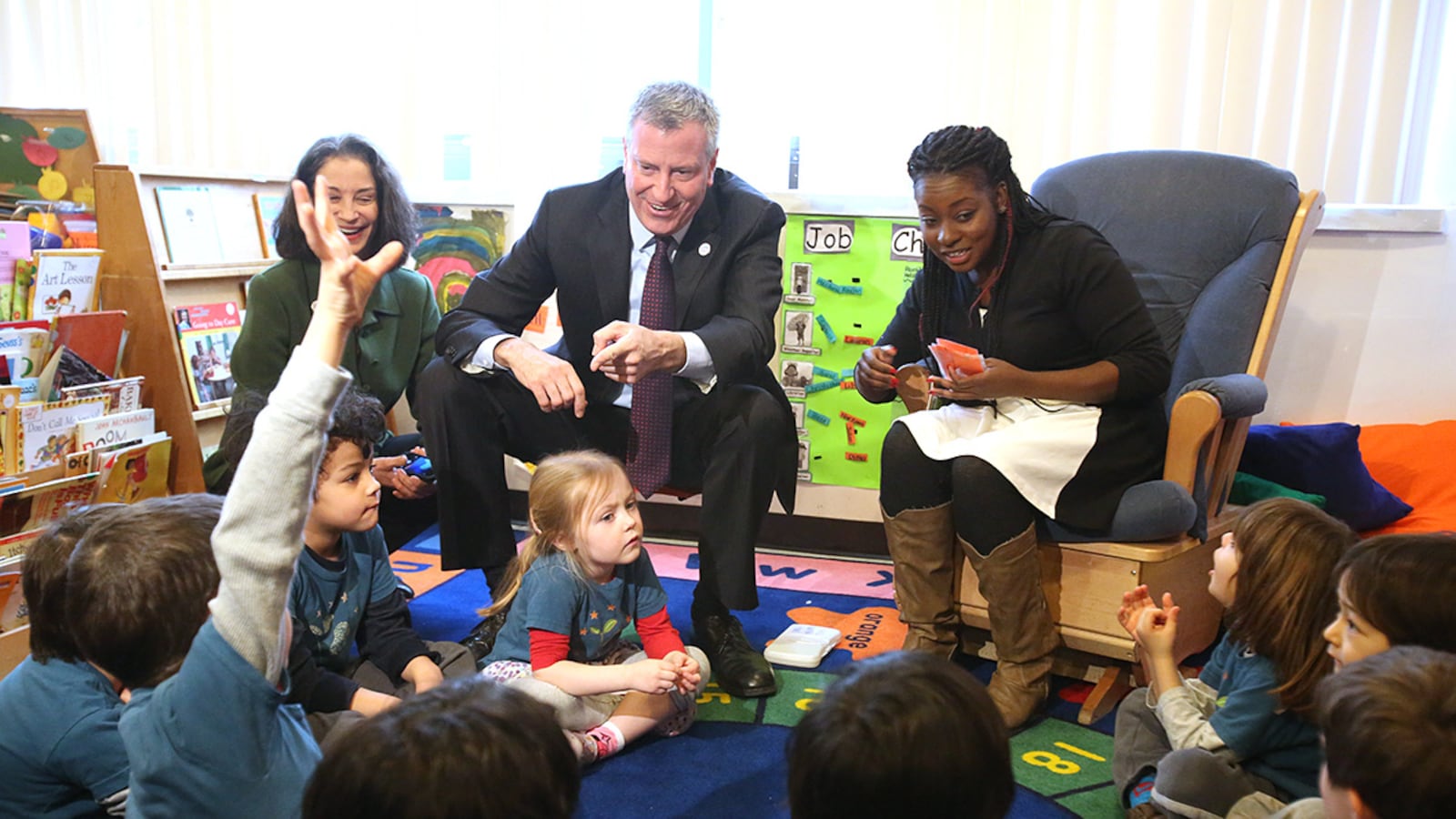At P.S. 276 Louis Marshall, there’s a “hand-to-hand” policy for pre-K students: Parents come straight to the classroom to drop off and pick up their children, who pass directly from the hands of their caregivers into those of their teachers.
Along the way, parents are encouraged to read a book with their child — classroom libraries are stocked with titles in parents’ native languages, like Arabic and Haitian Creole — or chat with a teacher about their child’s progress.
Principal Yasmine Fidelia says that has been the secret to becoming one of the most-improved pre-K programs in the city. According to data released this week by the city Department of Education, P.S. 276 in Canarsie, Brooklyn jumped from 2.6 to 4.6 on a 7-point scale. That is well above the 3.4 threshold to be considered an effective program.
“The parents and the teachers were able to work more closely because we have a hand-to-hand policy,” Fidelia said. “It just made it easier to form a relationship.”
As New York City raced to make free pre-K available for all 4-year-olds, fulfilling Mayor Bill de Blasio’s vision, observers have worried about whether quality could keep up with access. On Tuesday, the city released a second round of pre-K data that shows there is plenty of room for improvement — but also that some centers seem to have benefitted from the Department of Education’s emphasis on teacher training and curriculum.
Citywide, 84 percent of the sites evaluated between 2013 and 2016 earned a 3.4 or higher — up from 77 percent of the sites evaluated between 2012 and 2015. The tool — the Early Childhood Environmental Rating Scale – Revised — relies on a three-and-a-half hour observation and assesses things like teachers’ interactions with their students and whether kids get enough time to play.
P.S. 335 Granville T. Woods, on the border of Bedford-Stuyvesant and Crown Heights, Brooklyn, also showed an impressive leap in scores.
The program’s initial review found that teachers needed to work on building their students’ language skills. With the help of an instructional coach who visits twice a month and an on-staff coach that the school dips into its own budget to fund, teachers learned how to encourage deeper conversations with and among their students.
Principal Karena Thompson said she can see the difference. Now, teachers will listen to their students speak and follow up with questions like, “How do you know that?” or “What makes you think that?”
“We’re trying to make sure that the conversation and the language we use strengthens their thinking,” Thompson said. “They’re naturally so curious, so you want to tap into that.”
While city officials have touted the overall improvement across Pre-K for All sites, an analysis by Families for Excellent Schools — a pro-charter group and fierce critic of the city’s Department of Education — found much to criticize.
In order to meet demand quickly, the city relied on both private organizations and existing public schools to provide pre-K seats, with a split that is now roughly 60/40 private vs. public. FES found that privately-run centers are far more likely to be rated “excellent” or “good,” according to the most recent year of ECERS-R data.
Their analysis found that 93 percent of privately-run sites were rated “good” or “excellent,” while only 84 percent of sites run by the Department of Education received those top ratings. The group also reported that city-run programs were far more likely to be rated “poor.”
The performance gap between private and public pre-K centers actually grew six times larger since 2015, according to the advocacy group.
Devora Kaye, a spokeswoman for the Department of Education, called the FES report “grossly misleading.” FES only looked at the most recent scores, which Kaye said does not reflect a representative sample of all sites. The report also ignored another evaluation tool used by the department, under which DOE-run pre-K sites perform slightly better, she added.
“The latest data shows that we’ve built quality along with access,” Kaye wrote in an email. “NYC programs’ improvement is on par with nationally recognized pre-K programs.”

